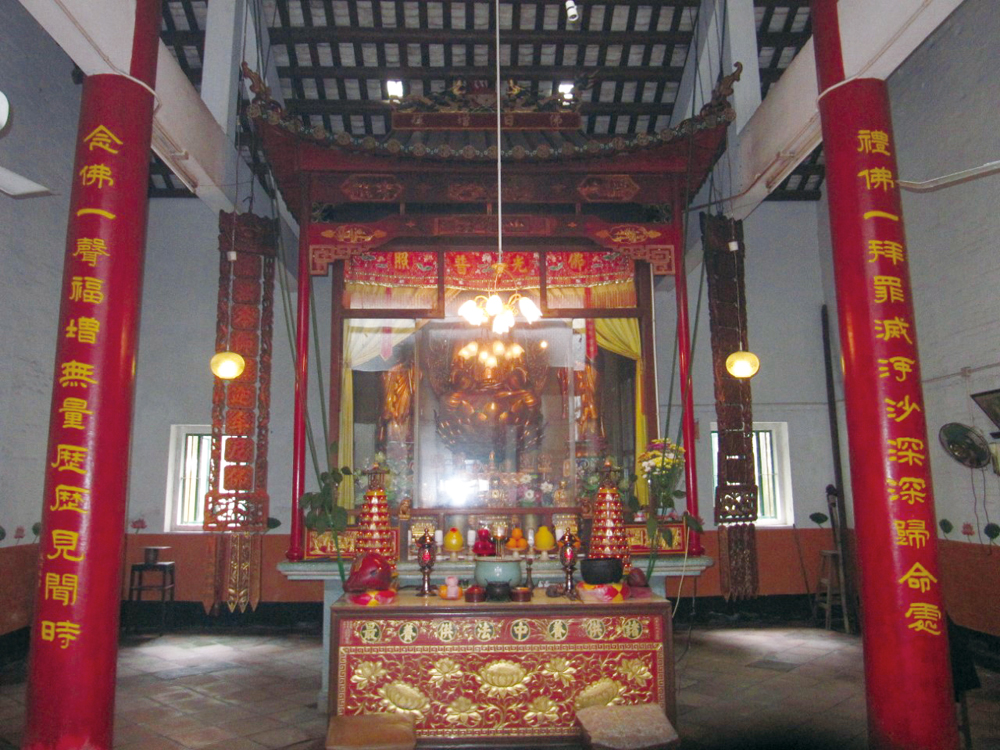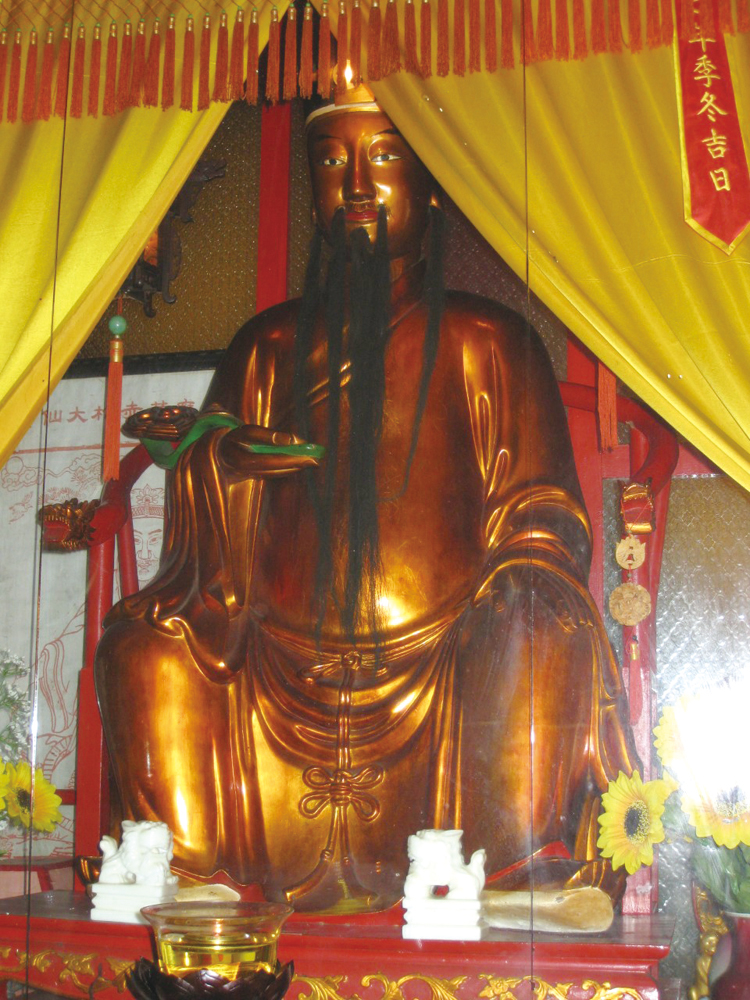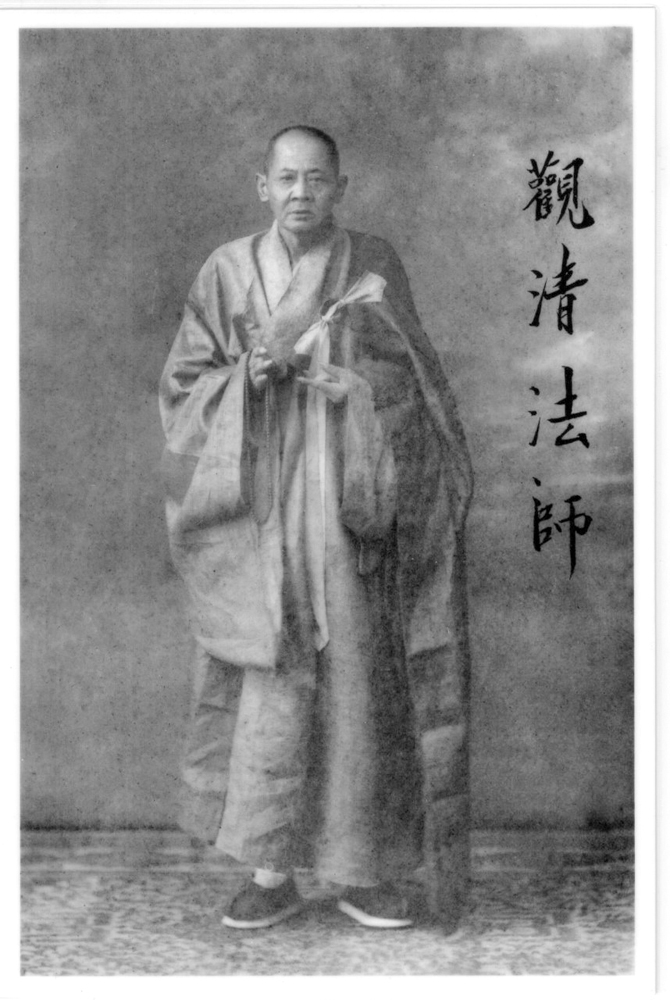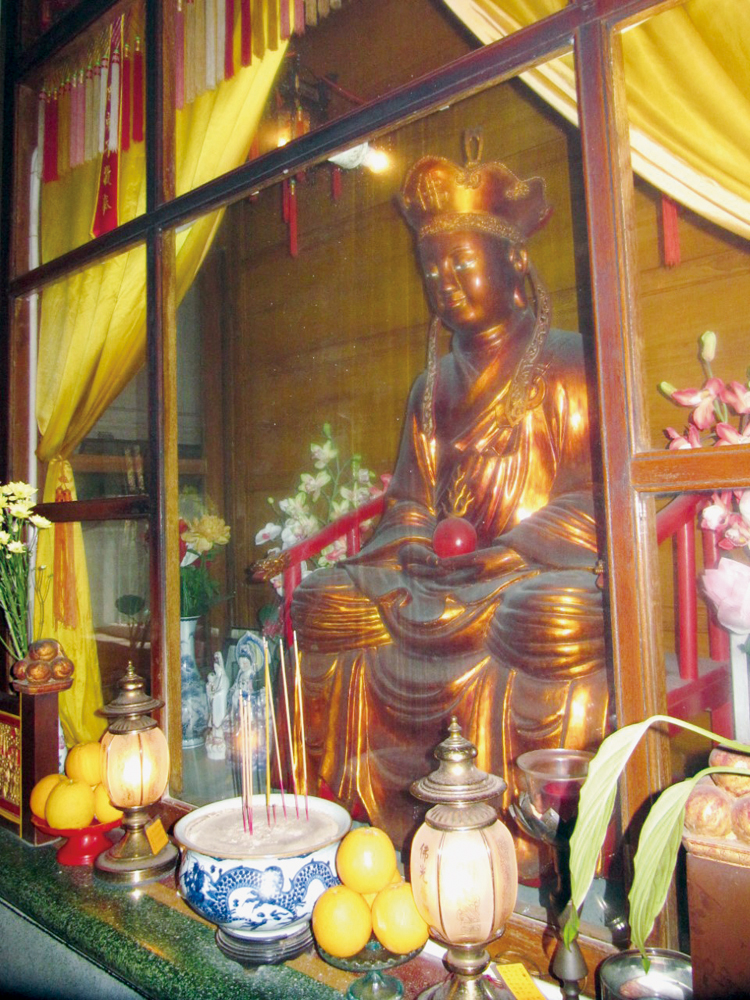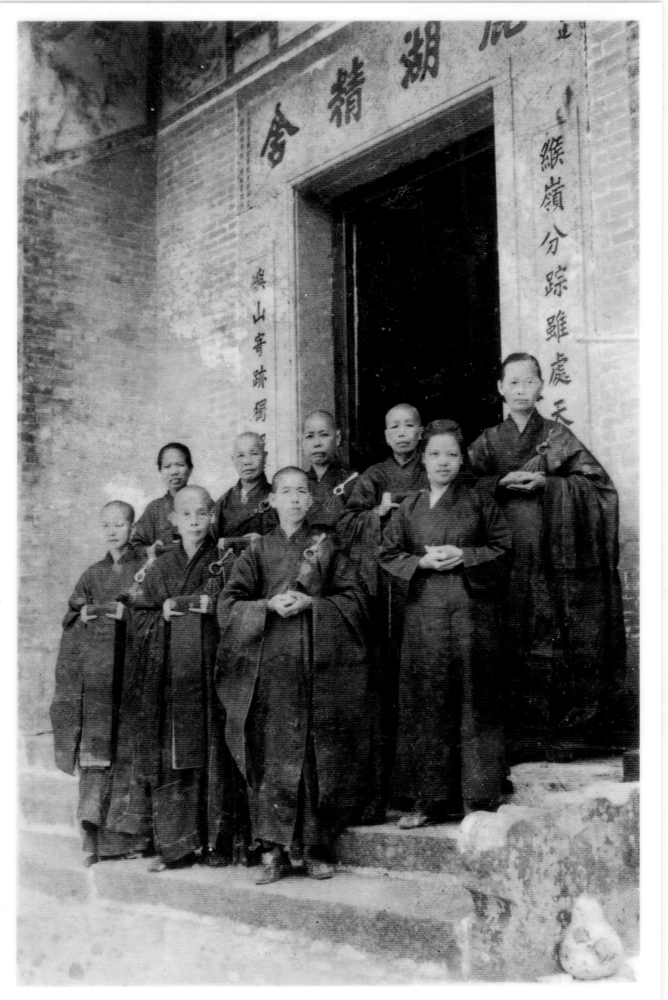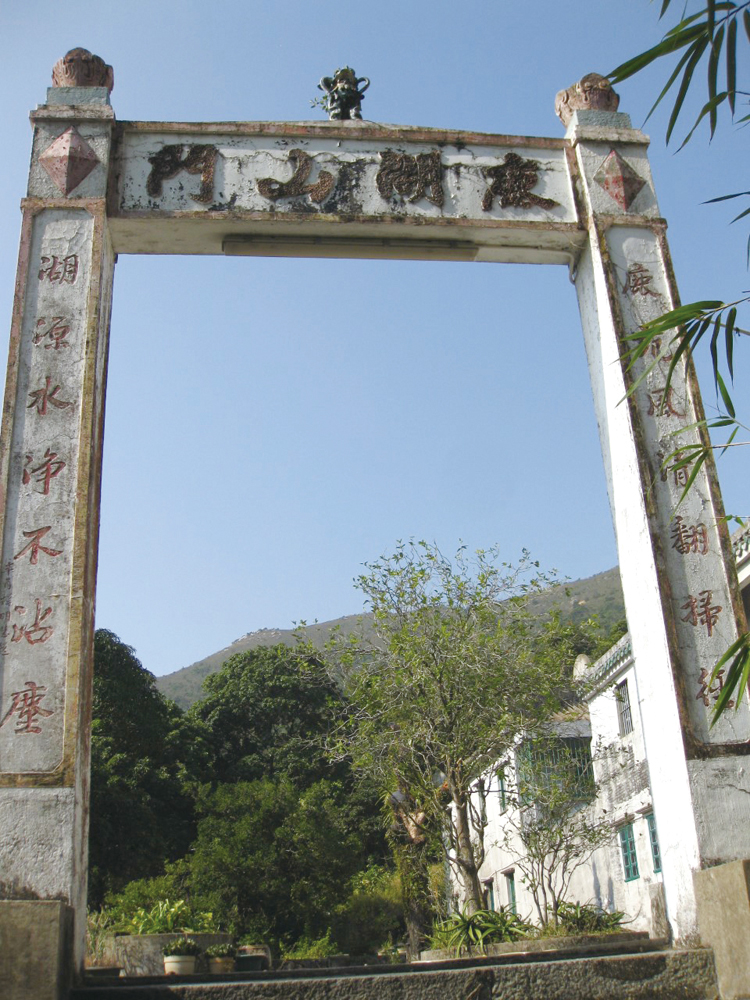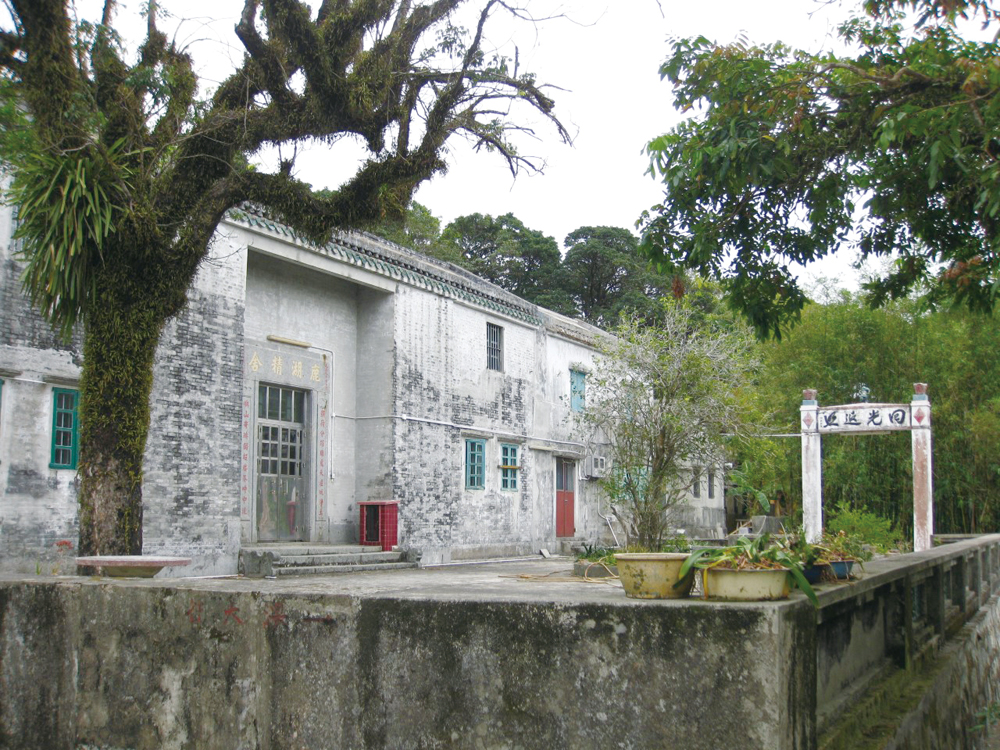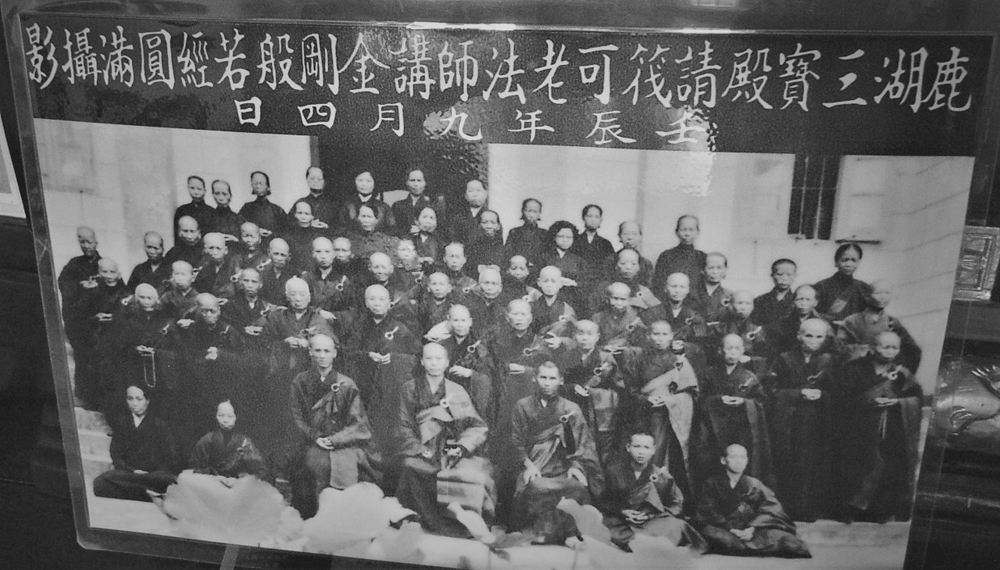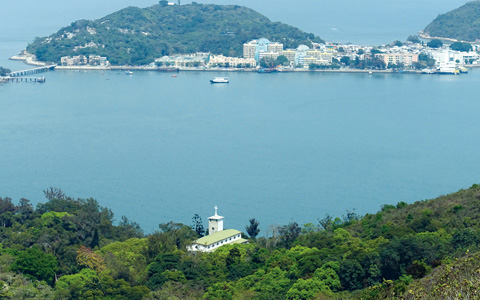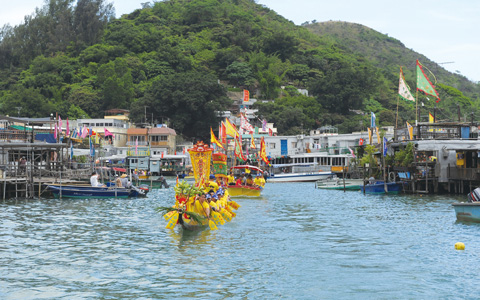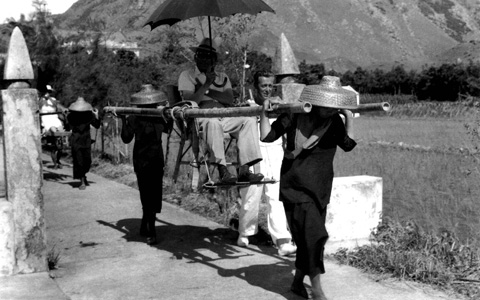Text | Chow Shu Kai
Photo | Chow Shu Kai
Folklore has it that Lantau Island’s feng shui – the geomancy of wind and water – is conducive to spiritual development because the terrain is “an elephant dragging its calf / as each generation begets monks”. Today, Po Lam Monastery, Po Lin Monastery, Kwun Yam Temple, Ling Yan Monastery, Lo Hon Monastery1 and many other great monasteries dot the island alongside smaller Buddhist sites.
“Elixir Kilns Kindled by One Dazzling Moon / Deer Lake Hugged by Green Hills in Eight Directions”2
The history of religious buildings in Lantau began in earnest with Shun Yeung Sin Yuen,3 built in 1883 (the 9th year of Guangxu reign, guiwei year, i.e. 20th in the sexagenary cycle). Now Luk Wu Ching Ser,4 it stands to this day at 18 Luk Wu Village.
The Ching Ser was built deep in the woods between Ngong Ping and Tai O. Covering large swarths of land, it mainly consists of the Ching Ser main hall; Shun Yeung Sin Yuen; two twostorey buildings with many small rooms; and a large kitchen. The complex was substantially renovated in 1955, during which it took its present name, and now both the Ching Ser main hall and the Shun Yeung Sin Yuen lodge (dedicated to Lui Cho)5 behind it are listed as Grade 2 historic buildings. The grading is clearly rather misleading, to the extent where it underestimates the real significance of the transition from a Taoist temple to a Buddhist monastery (daoguan to fosi ).
1. The Ching Ser is the first religious building and Buddhist monaster y in Lantau that we know of,6 and its conversion from Taoism to Buddhism began in 1909 when the descendants of Taoist priest Luo Yuanyi (born Chen Bingnan) entrusted the property to Master Guanqing of Jinshan Temple in Zhenjiang. Though built in the same year as Po Ming Sim Yuen, the first “quiet room” retreat built in Ngong Ping, there is no comparison as the Ching Ser is a full-blown Buddhist temple converted from a Taoist one that entered receivership, whereas Po Ming Sim Yuen was a thatched hut with little permanent construction to speak of until a stone cottage was built in 1915.
In addition to the main hall, the Shun Yeung Sin Yuen, and the kitchen, the Ching Ser also includes the separate Sam Po Hall (Fat Chuen Temple), the Hill Gate,7 a square, an ancestral hall, a guest hall, a Zen house, a pavilion, a scripture tower, and a workshop for farming tools and a mill, as well as the Putong Ta (“tower of commons”, monks’ ossuary or cemetery) and the Huashen Ting (“incarnation booth”, crematorium). The scale and arrangement of the entire complex are the largest and most complete in Luk Wu, and are impressive even by the standards of Lantau’s Zen forest.
2. The Ching Ser was originally a Taoist temple that was mainly dedicated to Lui Cho, marking the first time that Guangdong Taoism was preached in Hong Kong8 and unique in the demonstration of its development as corroborated by physical evidence. Its historical significance for the religion in the city is selfevident, and Lui Cho worship remains a largescale Taoist religion in Hong Kong to this day. Notably for Hong Kong history, all these Lui Cho temples made the switch to Taoist donothingism (xuanfeng ). Beside Shun Yeung, Poh Yea Ching She (i.e. Prajnavihara , formerly Po Ling Tung) in Sha Tin, and Fat Kwong Temple in Sai Kung also have similarly exceptional setup, with Taoist shrines for Lui Cho sitting in these Buddhist temples today.
3. In terms of intangible culture, Luk Wu Ching Ser may be a Buddhist temple, but it still retains the Taoist tradition of celebrating Lui Cho’s birthday on 14th of the fourth Lunar month to pay homage to its origins. The custom of serving homely vegetarian meals on the day for templegoers and monastics in the neighbourhood has lasted over a century against all odds.
4. As for historical relics, the stone doorcase on both sides of the main entrance of the Ching Ser still has the couplet from c. 1884 (9th year of Guangxu reign) by Liang Yiushu (1832-1888), the last Guangdong zhuangyuan top-scorer in the palace examinations. “Parting ways at Mount Songhou, though at the edge of the world, we return to the pure land / a transient stay in Lantau, rising alone above impure realms, towering over mediocrity.”9 How often do you see something like that in Hong Kong?10 Mount Songhou is a common figure of speech for a place where one attains enlightenment.
When Luk Wu was founded, the stone plaque at the entrance was engraved with the name Shun Yeung Sin Yuen by the hand of He Wei, Governor of Fujian and Zhejiang (1816-1888). 11Although it was buffed off and re-carved as “Luk Wu Ching She”, the original footer “Built on this auspicious day in the 9th year, Guangxu reign”, undersigned with “Respectfully yours, He Wei, Minister of Military Affairs, Right Censor of the Censorate, and Governor of Fujian and Zhejiang” remain. Liang and He are both famous
Guangdong figures in the late Qing dynasty, and the latter is a provincial head who was involved in the naval battle of Fuzhou (1884) during the Sino-French War in Mawei, Fujian. These calligraphic inscriptions are important historical relics in Hong Kong.
5. Sitting behind the main hall, the Sin Yuen has a wall by its left door carrying an 1883 stone inscription “Instructions by Shun Yeung and Po Wan Sin Yuen”,12 an invaluable document for the historical study of local religion and public security. In a demonstration of the fragile law and order in Lantau, the inscription mainly says that people should not harass this secluded Taoist temple or destroy the surrounding environment, or official reporting and investigations will surely follow and so on.
6. A group of four guardian gods, tall as adults, sit in the Sin Yuen to protect Lui Cho. Green Dragon, White Tiger, Seal Holder, and Sword Wielder13 are all superbly crafted with a forward lean. Done in a style similar to the Foshan ancestral temple deities, these wonderful works of art can intimidate the devout with a sense of foreboding and strengthen their faith.
“A Crisp Breeze Sweeps The Path in Deer Garden / Clear Water Feeds The Lake, Untainted by Dust”
Master Guanqing initiated Shun Yeung’s conversion from Taoism to Buddhism. Little is known about him, except that he was born in 1853 and died in 1928 with the dharma name Jueji and alias Guanqing. He belonged to Zen (aka Chan) Buddhism and was heir to Linji Yixuan, one of five major sects of the Southern School. Upon his death, he was buried in a seated position at Kam Kui Tei (“toad land”) in Ngong Ping.
It is said that Master Guanqing came to Hong Kong from Mount Luofu in the early years of the Republic. He lived at Dizang (i.e. Kṣitigarbha) Temple in Fu Shan, Tai O, for three years.14 When the temple collapsed, he had to find another place to live and went to the Shun Yeung Sin Yuen in Luk Wu Cave. A local plague15 took 13 lives in the Sin Yuen, and while Luo Yuanyi was spared, he swore by feng shui and attributed the catastrophe to the idea that the cave was suitable for Buddhism and not Taoism. All his worries left him when Master Guanqing appeared, and Luo promptly received the master who in turn moved the Dizang statue from its temple to the Sin Yuen where it remains to this day.
After Luo Yuanyi passed away, neither his son Chen Jingsheng nor the owner-abbot or the manager or others intended to run the Taoist temple, so they entrusted Master Guanqing to take over in 1909. The Taoist temple was duly converted into a Buddhist retreat, but the Taoist statues in the Sin Yuen and the “greeter”, Numinous Official Wangling Guan, stayed on.
Since Master Guanqing, Luk Wu Ching Ser gradually became a nunner y and changed its denomination to Pure Land Buddhism. Services were done in Guangdong Buddhist rites, popularly known as Shijia Fashi (“dharmic services”), and its residents became all-female. Each new generation took its own name, from Virtuous (de ) to Complete (yuan ), and now the fourth Exquisite generation (miao ).
Ching Ser saw its peak in the 1950s, when there were a hundred cloistered nuns and devotees living in a self-sufficient, plain, and fulfilling religious life. Back then, many venerable monks liked to teach seminars at the Ching Ser. Renowned monk Fa Ke from Po Lin Monastery taught the Diamond Sutra at Sam Po Hall in 1952; another monk Minsheng studied at Luk Wu Ching Ser for seven years and taught the Vimalakirti Sutra there in 1972. Each of these lessons became celebrated events in the Zen forest of Lantau.
The 21st century, however, brought in columbarium groups which pored over the dwindling Buddhist scene in Hong Kong and purchased large numbers of Buddhist temples on the island to renovate them and sell for a profit. Of the dozens of temple halls in Luk Wu, at least eight were sold. The Ching Ser covers a vast estate, but its small population has attracted predatory columbarium groups. Staffers knock on the door to discuss purchases with no end to the nuisance. One large and rich temple on Lantau saw from day one that the Ching Ser plot will fetch a good price, sending in monks to make a point and seal a deal that was repeatedly rejected. However, the various bhikkunis (ordained female monastics) say that while they are keen to defend the temple property and cultural relics from outsiders, time stops for no one and they may reach the point of exhaustion one day. The future of this century-old religious building is genuinely worrying.
1 Translator’s note (TN): Luohan , transliteration of arhat, one who has gained insight into the true nature of existence and has achieved nirvana.
2 TN: for eight Guardians of the Directions or dikpāla in Tantric (Mizong ) Buddhism.
3 A merger of Shun Yeung Monastery and Po Wan (Puyun) Monastery, the latter being a female retreat. Outsiders usually refer to both as Shun Yeung Sin Yuen. (TN: Sin Yuen, “courtyard for xian or Taoist immortals.)
4 TN: sometimes spelt Ching She. Luhu jingshe , lit. “Deer Lake elegant abode”. Jingshe used to mean a Confucian academy or study, before it was loaned for translation of vihara , a monastery for Buddhist renunciates.
5 TN: or Lü Dongbin, one of the Eight Immortals for Taoists.
6 “(…) Luk Wu Ching Ser is the first to be built among the zen forests in Lantau.” Xiangjiang fanyu [Brahmic buildings in Hong Kong], 336.
7 TN: shanmen , originally sanmen , “three gates” to liberation (vimokṣa) through emptiness, signlessness, and desirelessness (śūnyata , animitta , apraṇihita ).
8 Daofeng bainian [A century-long wave of Taoism] , ed. You Zian, ch. 1, s. 2.
9 Gouling fenong, suichu tianya gui jingtu / yushan jiji, duchao chenjie zhi zhongliu. Jingtu , “Pure Land” (or kṣetra , abode for bodhisattvas); chenjie , “realm of impurity or dust” (guna).
10 The author understands that Ling To Monastery in Ha Tsuen has Liang Yaoshu’s “This way to the WAY” (Dao congci ru ) Taoist plaque. Kun Ting Study Hall in Ping Shan brandishes a couplet from Lin Zhaoyu, another Guangdong top-scorer.
11 Visible in an old photograph by early 20th century traveller Wong Pui-kai, alias Jiangshan Guren. Close scrutiny reveals traces of the original four characters on the plaque.
12 Originally to the left of the main gate, now reinstalled on the wall on the Shun Yeung Sin Yuen lodge behind the main hall.
13 TN: Qinglong , Baihu , Pengyin , Zhangjian .
14 Ching Ser veterans hold that the Dizang temple was three hundred years old and located at Old Tai O Police Station (now Tai O Heritage Hotel).
15 Some say it was in Yi O.





